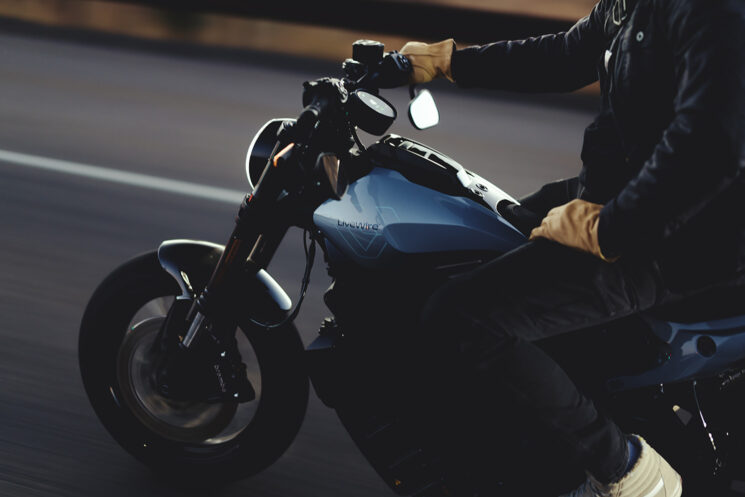
This week’s compilation is jam-packed with new releases from major OEMs. We take a look at the new KTM 390 SMC R and 125 SMC R, the updated Yamaha XMAX sport scooter, and the LiveWire S2 Alpinista electric sport standard. A plucky Yamaha SR500 flat tracker lurks in their midst, flying the flag for custom motorcycles.
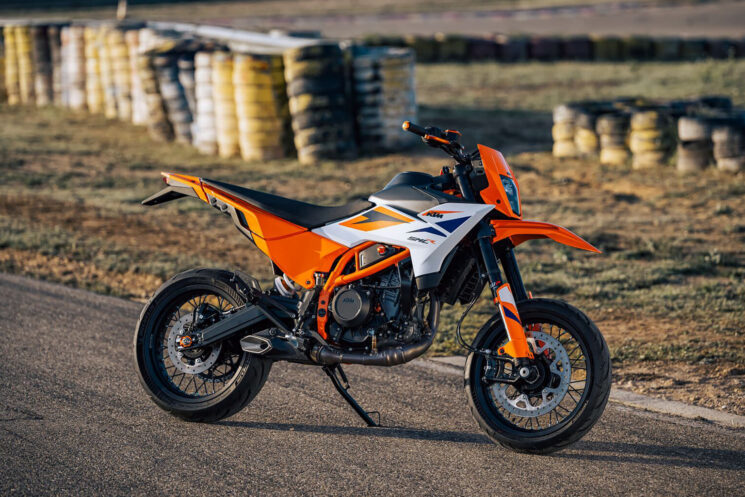
2025 KTM 390 SMC R and 125 SMC R We’re only three weeks into 2025 and, to our shock, KTM has actually produced a good-looking motorcycle—two of them, in fact. Despite the company’s financial woes, they’ve just unveiled the brand-new 2025 KTM 390 SMC R [above] and 125 SMC R. We’re tickled orange.
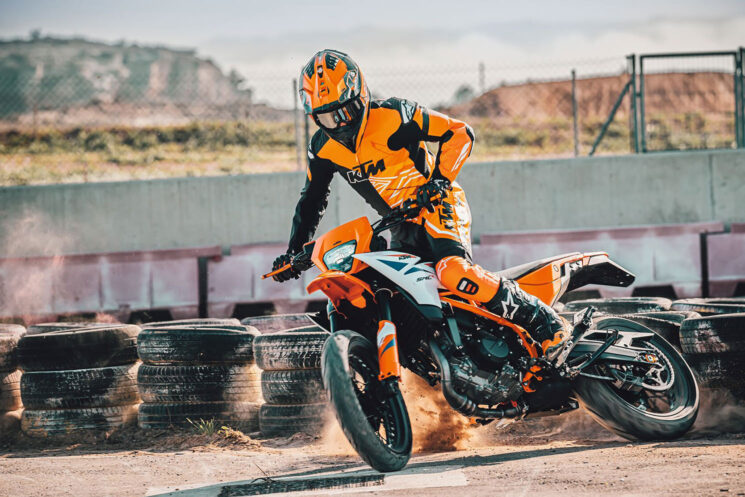
This new pair of SMC Rs joins the KTM supermoto lineup alongside the existing 690 SMC R. Although they were inspired by their big brother, they make the 690 look like a waterlogged flip-flop.
Where the 690 looks visually light at the front and heavy at the rear, the new models are perfectly proportioned, with a waspish tail and a muscular midsection. Their tank covers reach forward and combine perfectly with the leading edge of their high-mount front fenders.
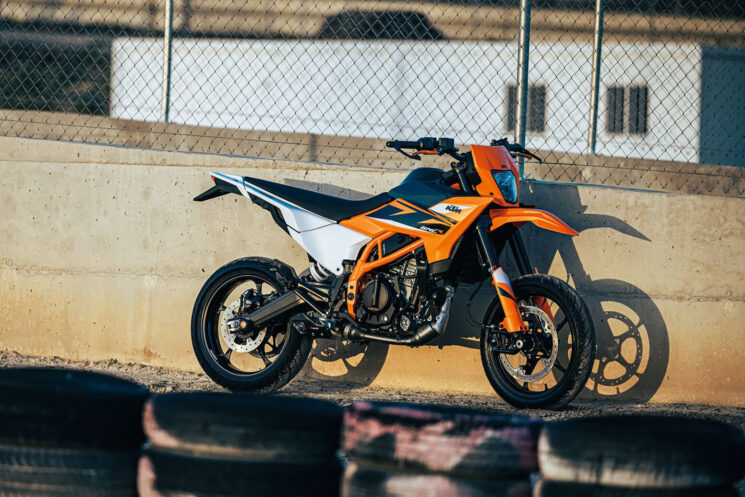
Being supermotos, they ride on 17” wheels and have upright ergonomics more akin to dirt bikes. The KTM 125 SMC R [above] gets lightweight cast wheels, while the 390 is equipped with spokes.
Both models are equipped with LED lights all around and 4.2-inch TFT dashboards. There are some smarts built in, with riders able to access music, incoming calls, and even turn-by-turn navigation through the new dash. The KTM 390 SMC R adds switchable rider modes to the setup.
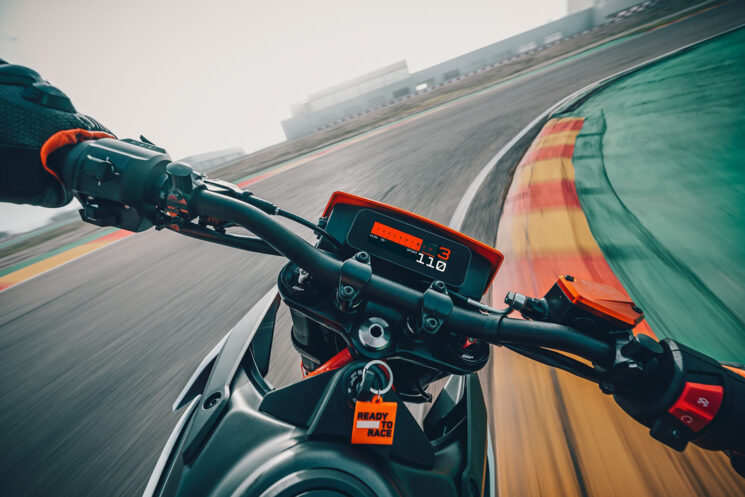
Powered by single-cylinder LC4 engines, the KTM 125 SMC R makes 11 kW [14.75 hp] and 11.5 Nm, while the 390 SMC R is good for 33 kW [44.25 hp] and 39 Nm. Beyond their differing engine capacities, the two bikes share a smorgasbord of components.
Both use a 9-liter [2.38-gallon] fuel tank, which, although small, is made of metal and perched on top of a new trellis frame. Adjustable WP suspension is found at both ends, and the clutch lever, brake lever, and footpegs are adjustable for riders to dial in their perfect setup. The 125 weighs in at 145 kg [319.7 lbs] while the 390 weighs slightly more at 154 kg [339.5 lbs].
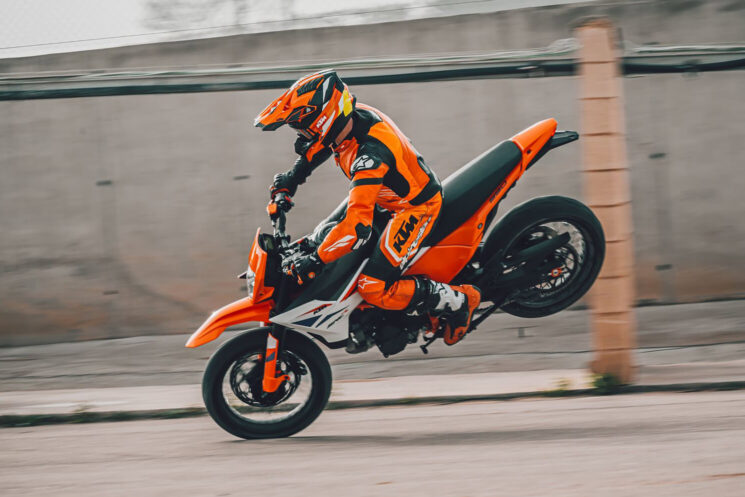
Both bikes are designed by KTM and are built in India, with the 390 currently listed at $5,499 on KTM’s US website (the 125 doesn’t seem to be available in the US right now). That puts it in the same financial ballpark as Triumph’s 400 cc offerings, and a smidgen cheaper than the Husqvarna Svartpilen 401. We’re certainly tempted. [Source]
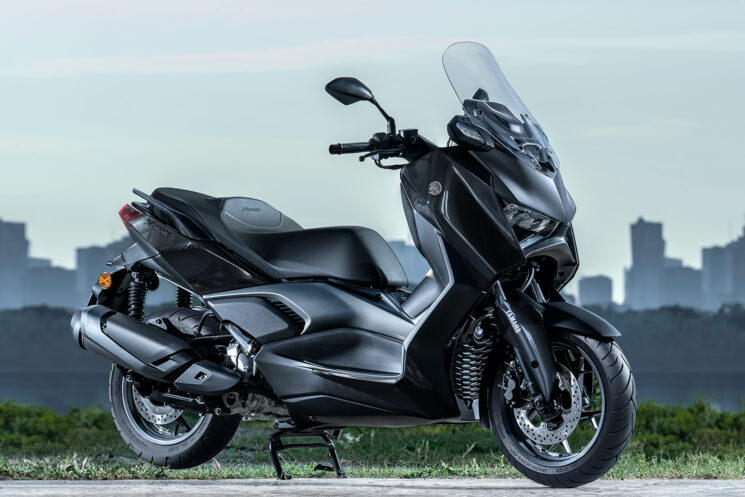
2025 Yamaha XMAX We all get to a stage in our lives where it makes sense to park a scooter in the garage. They’re light on fuel, easy to ride, and impossibly practical. And, in the case of the new Yamaha XMAX, they’re sporty too.
The 2025 Yamaha XMAX is the Japanese marque’s take on premium urban mobility. Thanks to a newly optimized traction control system and 292 cc four-stroke engine, the XMAX will get away from stoplights faster than most café racers—all while returning 73 miles per gallon [around 31 kilometers per liter].
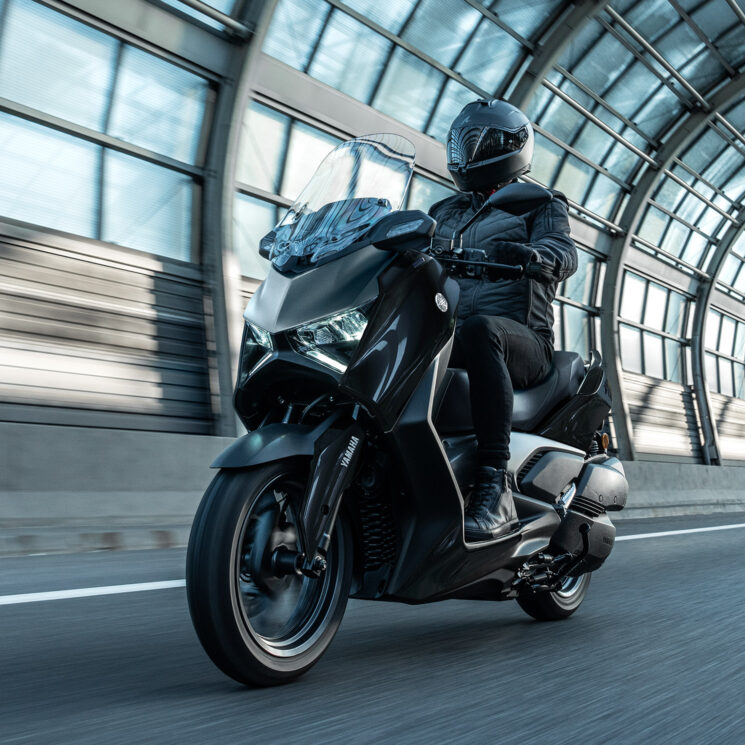
The 15-inch front and 14-inch rear wheels are shod with Dunlop Scoot Smart tires, and the sporty front end has been reshaped to improve aerodynamics and reduce wind buffeting. More importantly, the XMAX is now equipped with an electronic windshield sporting four inches of adjustment. It’s like a baby R1M, except more comfortable and practical.
The slick dashboard has been redesigned and is now split in two. The left side features a 3.2” LCD screen that displays speed while a 4.2” TFT screen is on the right displaying a digital tachometer. Yamaha Y-Connect is also included, allowing owners to pair their smartphone with the new dashboard for extra functionality.
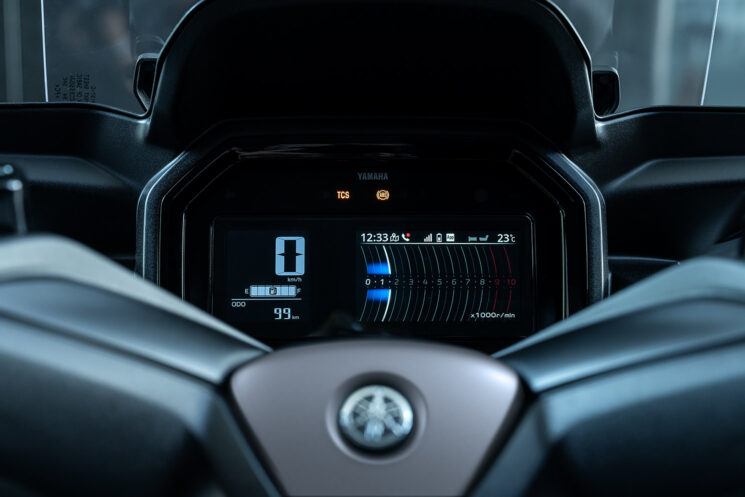
A USB-C socket has been added, along with a handlebar that can be adjusted by 20 mm. The turn signals have been integrated into the front fairing, and the weight of the new muffler has been reduced over the previous model.
Will the new XMAX design and features be enough to draw diehard motorcyclists into the light of comfort and convenience? Probably not, but we’ll keep trying to convert people anyway. [Source]
![]()
Yamaha SR500 by Workshop43 In the custom world, few motorcycles rival the iconic status of the Yamaha SR500. It’s versatile, simple, and relatively cheap—three features that make it the ideal choice for any type of custom bike.
When the opportunity to build and race a flat tracker presented itself to Andi of Germany’s Workshop43, he jumped at the chance. And since Andi has a penchant for punchy singles, the SR500 was the obvious starting point.
![]()
Andi started by grafting the front end from a Kawasaki ZX6R onto the Yamaha frame. He also went the extra mile and built a frame jig, so that he could modify the headstock and steepen the steering head angle for sharper cornering. A steering damper was fitted to help him keep the flat track handlebars in check, and the number plates were built from scratch.
The glorious tank patina was wisely left alone, sitting above a rebuilt engine. Stronger valve springs, new valve seats, and a rebuilt carburetor help hot gas exit through the custom stainless steel exhaust.
![]()
The Alcantara seat was stitched by Andi himself, and the rear wheel is from a KTM. The SR500’s subframe was chopped and looped, with a nice little fender bolted on for good measure. The front brake was removed (to satisfy flat track racing regulations), with a Yamaha XS750 rear disc brake joining the fray.
The bright red frame pairs exceptionally well with the unrestored tank, and we love how the beat-up metal contrasts with an engine that looks brand new. Andi reports that he had an absolute blast ripping the SR around the track—and we believe him. [Source]
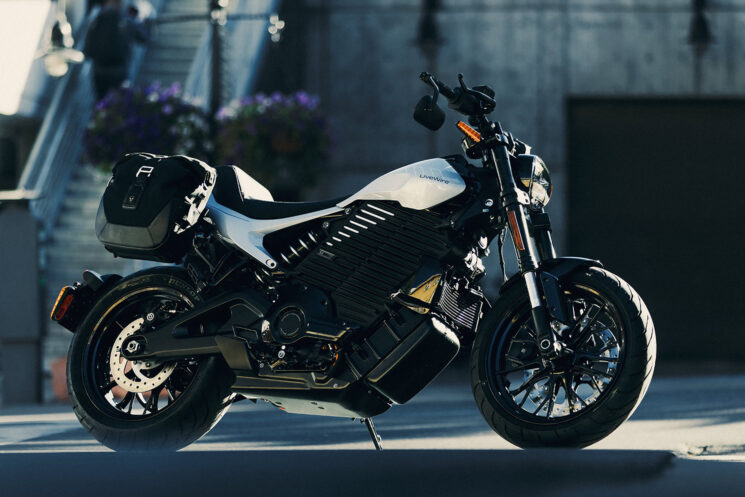
2025 LiveWire S2 Alpinista LiveWire has just pulled the covers off the LiveWire S2 Alpinista—the third motorcycle in the company’s ‘S2’ lineup, after the Del Mar and Mulholland. It borrows styling cues from both of its stablemates, making it a rather handsome electric offering.
Closest in design to LiveWire’s S2 Del Mar, the Alpinista’s changes are subtle. Its seat height is down 1.1 inches from the Del Mar, thanks to its smaller 17” wheels and shorter Showa suspension. Its 31.2-inch seat height is still fairly high, but it’s helped along by a relatively low weight of just 196 kg [433 pounds].
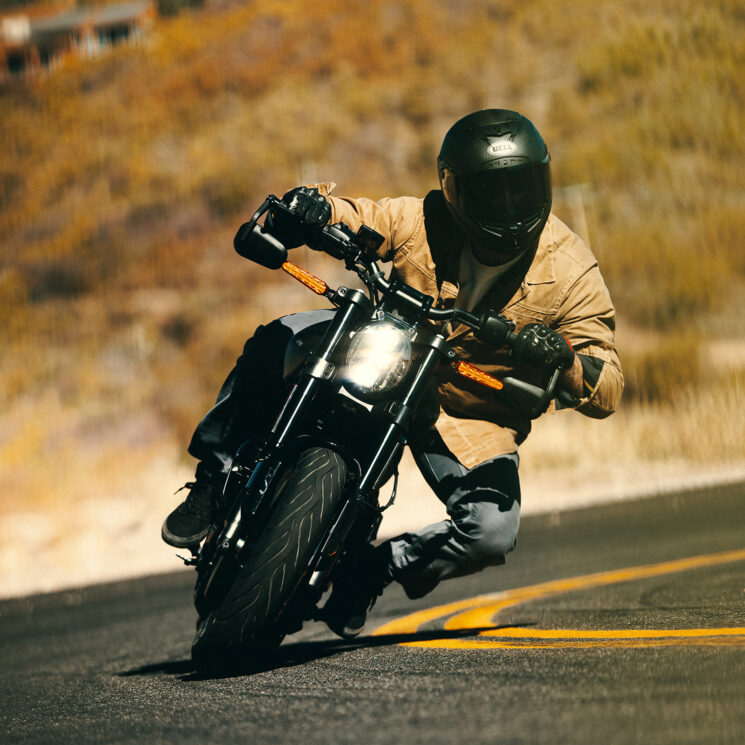
The 10.5 kWh battery and electric motor pump out a healthy 84 hp and 263 Nm of torque, which is why the S2 Alpinista rockets silently to 60 mph in just 3.0 seconds.
Pitched by LiveWire as a ‘sport standard,’ the Alpinista is said to combine “the urban agility of a supermoto with the do-it-all nature of a touring bike.” To that end, the wheels are wrapped in sticky Dunlop Roadsmart IV tires, with the stepped seat and handlebars creating an air of comfort. The LED headlight comes from the LiveWire S2 Mulholland, which probably got it from the parts bin of LiveWire’s parent company, Harley-Davidson.
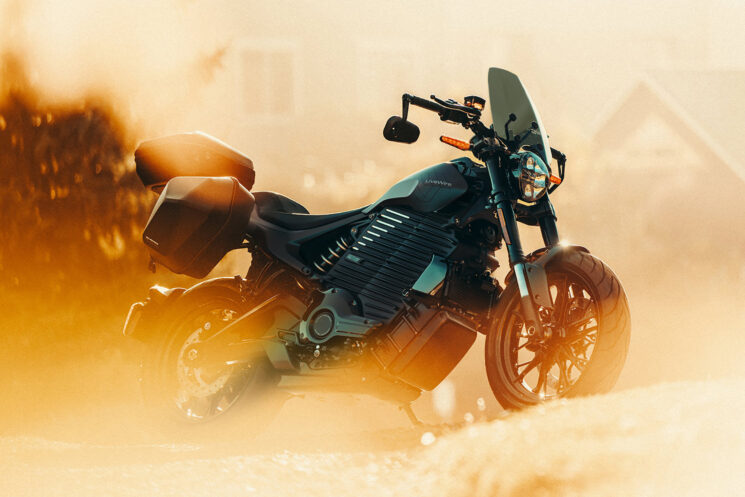
Launching alongside the bike are a variety of Alpinista-specific accessories. The list includes a sports seat (that has a slight Harley Low Rider ST vibe), a windscreen, and mounts for soft and hard panniers.
Starting at $15,999 in the USA and £17,390 in the UK, the Alpinista is the cheapest option in the LiveWire lineup. That’s still a hefty amount of coin for a bike with only about 120 miles between charges though. [Source]
